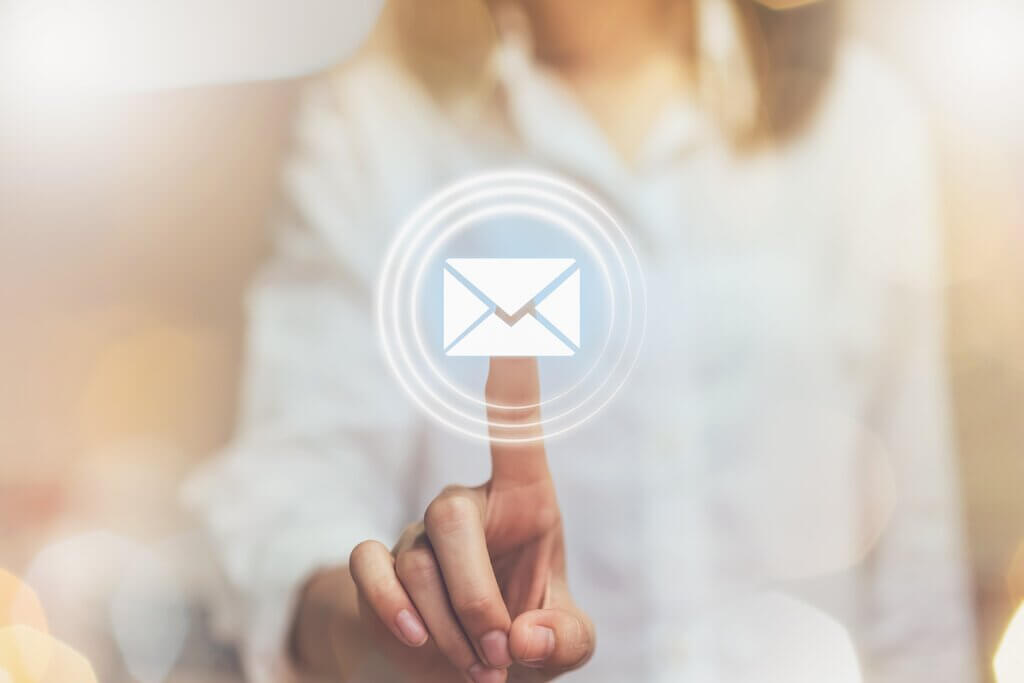How to Prepare Your G Suite Account for Cold Email
Lead Generation 13:44: minIt’s very easy for your B2B emails to end up in the junk folder. If you aren’t sending them out according to industry best practices, few of them will ever go anywhere besides spam. However, don’t worry!
This is one of the most common issues when you’re working with emails – whether you’re doing email outreach or email marketing. But, how do you avoid emails going straight to spam? That’s what we’re here to teach you.
First things first: it’s all about filters. Google, Yahoo and other email providers are basically looking out for their user base. If they pick up specific details or elements which they consider “spammy”, that’s where your email will end up.
For this guide, we’ll go through a few tips and tricks for both cold email and newsletter marketing. Because yes, they’re different, in both purpose and best practices.
Quick side note for salespeople: do you want to become a pro at cold email lead generation and get results in only 30 – 60 days? Check out our course, Email10K. We have 5+ years of experience in cold email outreach, and our lead generation strategies have generated over $100MM in B2B sales.
What Is a “Spam” Email?
You can’t understand how to avoid your emails going to spam without understanding what “spam” is. This is your first step to prevent just leaving revenue on the table and not appearing in your prospect or lead’s inbox.
In the last few years especially, the big email providers have really cracked down on spam. However, their mechanisms aren’t 100% failproof.
In other words, even good emails can sometimes be flagged as unwanted automatically. Essentially, “spam” is unsolicited email that either annoys with irrelevance, or aims to deceive/commit fraud.
That’s not the only criteria for spam though. Another big factor is user engagement. Inbox providers also measure how your recipients react to your emails.
Are they spending enough time reading the content? Do they click the links? Do they reply? Are they even opening the email?
One of the worst things that can happen is users manually reporting the email as spam. If enough people do this, you can get blacklisted fast.
Are Your Emails Stuck in Spam?

Look at metrics from your emailing tools. The main thing you should monitor is the open rate of your emails.
- If you’re above a 60% open rate, good job!
- A 25% – 30% open rate means you need a better subject line.
- Open rates under 10% though mean you’re most likely getting marked as spam.
How to Prevent Emails From Going To Spam
We’ve prepared the best advice we have to give for both B2B email marketers and B2B outreach specialists.
Let’s cover 5 tips for marketers first, and then we’ll get into 5 more details about outreach for the sales experts. We’ll finish it up with 5 general tips that are useful for everyone.
How to Avoid Emails Going to Spam – Marketing
Deliverability issues aren’t reserved only for novices. All of us have experienced it at least once, and it actually happens daily to hundreds of people.
Here’s how you get your emails to stay in the lead’s inbox.
1. Create Custom Email Lists
Never buy emailing lists. Just don’t.
If you’re sending your newsletters to people who didn’t request them, you’re spamming. It’s as simple as that. Besides it being unethical, you’d also be actively violating the CAN-SPAM, GDPR and CASL acts.
Among other things, these American, European and Canadian acts highlights that recipients have to:
- Give explicit consent to receive communications from you.
- Receive emails with clear & concise subject lines that correctly describe the content of the email.
- Always see your physical mailing address in the email (you can auto-include it in all email footers).
- Always have an opt-out option from being subscribed, no exceptions!
So, you need a user base that wants to receive what you’re sending. Naturally, building one is a long-term effort.
However, it’s an approachable task, don’t worry. For example, you could use SEO to optimize your website for organic ranking. It works especially well hand-in-hand with content marketing!
Then, on the landing page of the user, you create a “lead magnet”. That’s going to be either a very convincing tranzactional call-to-action (CTA), or some sort of free-to-download offer.
Either way, you’d request their email address and newsletter consent in exchange. And there you go, you’ve got a new lead.
2. Use a Bulk Email Service
You’re most likely using some sort of email marketing service like Mailchimp or Sendgrid already. But if you aren’t, get to it. As in, right now!
Why? Because they make your life a whole lot easier, while also protecting your sender reputation. They both have loads of automation and other tools, while also giving you access to their domain name.
When you use Mailchimp or Sendgrid (or other options), all of those bulk emails that you send are routed through their servers. This way, your own domain is “hidden” behind theirs.
Email providers know who these companies are, and that it’s normal for hundreds of thousands of emails to be sent from them every few hours/days/etc.
On the flipside, if you suddenly send 200 emails directly from your inbox, you’ll be in trouble. At first, the email address will be temporarily suspended. An administrator then has to manually un-suspend it.
In essence, you’re damaging that email’s domain. And you’ll keep damaging it more and more if you send hundreds of emails a day from an inbox that’s not “warmed up”.
Eventually, the domain itself is finished. 90% of all sent emails just get marked as spam automatically. You might as well delete that domain.
But anyway, why would you send marketing emails from a G-suite inbox, or something similar? Inboxes don’t allow for any design or automation that your newsletter needs.
3. Authenticate Your Email/Domain
Aside from just using an email marketing service provider, you should also do 2 extra steps.
At minimum, you’ll need to go through a “single sender verification”. This is where you verify a single email address tied with your domain in your bulk email dashboard.
It’s easy; you just fill in fields such as the “from name”, “from email address”, “reply to”, company contact information, etc.
Of course, you need a bespoke domain name. Using google.com or yahoo.com will most likely result in failure for the entire process.
Once the process is finished, you’ve confirmed that you own the address and aim to use it in good will.
Domain authentication is truly how to stop emails from going to spam. Basically, you’re whitelabelling your domain. Each email also informs email service providers that you’ve authorized your bulk email provider to send that email in your name.
This also has a visual component to it. Only after it’s done will recipients see the email coming directly from your domain, and not “via @bulkemailprovider.com/net”.
It’s a sign of a professional business for both deliverability reasons and for leads. Especially important is the technical side of it; domain authentication massively improves deliverability and sender reputation.
Think of it as signing the email as officially and knowingly coming from you.
4. Give Options to Leads
Naturally, you want your leads to receive all that you have to send them. However, that doesn’t mean that they do as well. If you want to be more user-friendly, give them a “preferences” URL in all emails.
This is a feature that is present in a lot of bulk email service dashboards too. In essence, it takes the lead to a page where they can tick/select which types of emails they want to get from you, and how often.
There’s a significantly lower chance to get marked as spam by people when you’re only sending them explicitly what they want.
Especially in B2B, your leads have less time and look for even more valuable ways to spend it. Help them do that.
5. Send Valuable/Useful Content
Do you want to know how to prevent emails from going to spam in an easy way? Send quality content!
It doesn’t matter how many emails you’re sending or how often if they’re not relevant at all. Aim to have interesting things to share (guides, whitepapers, best practices, studies, statistics, etc) that your recipients would actually want.
Don’t send just because you have to send something. Why? Because that’s spam! Email filters pick up on specific, percentage-proven “spammy” words and eventually you’d get blocked too using this route.
Additionally, you’re not showing respect to your leads if you’re willing to send whatever in an effort to convert them.
They signed up for precise materials: deliver on what you promised, and they’ll engage with the email. The higher your engagement goes, the better the deliverability rate of your emails.
To this extent, only send relevant content to the relevant people! Not all of your leads have signed up for a newsletter for the same reason. Segment them appropriately and provide only the requested information.
How to Avoid Emails Going to Spam – Sales
How to avoid emails going to Spam
Lead Generation 07:24: minCold email does not mean sending a generalized template to a ton of people who might not even be interested. That’s just spam.
Your approach must be targeted and strategic. Just perceive it all through the lens of the recipient. If you were to receive your emails, would you read them? Would you care?
Email outreach must serve the interests and wants of your prospects, not yours. If they don’t, they’ll end up in the spam folder.
By the way, Mailshake is a great cold email service. Check them out!
1. Use a New Domain
The most intuitive thing to do could seem to just pick an email address from your domain (@yourwebsite.com) and start doing cold email.
However, this is very, very wrong! When you’re just starting out, there’s a good chance you’ll commit a few mistakes. Typos, wrong email addresses, mixing up prospects, suddenly sending lots of emails daily, etc.
All of these can easily make you automatically land in spam folders (or dissatisfied prospects will manually report you).
So, if you do this with your main domain name, there’s a high chance you’re going to damage it. You can also temporarily lose it through blacklisting. Most blacklists have a “delisting request” feature, but some of them ask for a fee.
Furthermore, you’d compromise everyone’s email deliverability (who also use that domain name for their email) in the meantime.
And if that also happens to be your website’s name? You might as well start over with your business.
What to do: create a new domain, forward it to your main website so it looks real (for UX reasons and deliverability), and then go through the steps below.
2. Set Up Your Inbox
After the email address exists, make sure to:
- Add a profile image.
- Fill in other business details.
- Create a signature.
For the first 2, you’ll have to go to your email provider account settings. Just add a photo of you and then fill in other information such as the business address, your birthday; just fill in all the fields really.
You can add the signature directly from your inbox settings. Similarly, add your job title, business address, mobile number, company name with a link over it to your website, LinkedIn profile. Meaning as many details as possible.
Yes, Google specifically checks all of this.
They coded their solutions to learn on their own. Exactly why they decide one thing or another is spam might be unclear even to Google.
However, our own experience has proven time and again that the data mentioned above is always cross-checked with other sources, in attempts to verify you’re an actual person.
3. Warm Up Your Inbox
Email providers want to see you’re a real person who both sends and receives email at a “standard” rate. If you start sending loads of emails from a fresh address, it’s clear you’re just doing outreach.
So, you’re marked as a spammer and get sent back to square one.
Past email activity is one of the most important metrics for email providers. That’s why you gotta provide them an activity history:
- Subscribe to 20 email newsletters to make your inbox seem “lived in”. It doesn’t matter which newsletters they are. The more they send, the better.
- Create social media profiles (Twitter, Pinterest, Facebook, etc) and activate email notifications for everything.
- Send emails to around 10 friends (or whoever) every day for 2 – 3 weeks! Also, they have to reply to them, so ask them nicely. This creates both IN and OUT traffic and solidifies your inbox as not being used for spam.
If that sounds like too much manual work, you can just use lemwarm for it.
4. Customize The Emails
The less automated the emails look, the higher the chances they get in a prospect’s inbox. Sending hundreds of identical emails can only mean one thing: spam.
At the minimum, customize the first 1 – 2 lines, add the recipient’s first name, and ideally mix up the content in the body of the emails too.
What’s more, customized emails offer prospects a better UX. So, a lower chance for a manual report for spam (which are basically a critical blow).
Feel free to get in touch with us anytime for even more cold email best practices.
5. Avoid Spammy Words
There are some words that will get you marked as spam on the spot. This is because of the way they are usually used right now, and how they were generally used in the past.
Do not use such words under any circumstances. Not in the subject line, not in the body, not anywhere.
At best, you’ll get away with it for a while, but Google always catches on. Let’s get into a few examples.
Offer words:
- Free
- Cashback
- 100%
- Cheap
- Amazing
- Cash
- Call
- Offer
- Certified
Banned phrases:
- All natural
- As seen on
- Best price
- Best bargain
- Best deal
- Lose weight now
- Trial period
Aggressive action words:
- Click now
- Take action
- Do it now
- Don’t miss out
And that’s just the tip of the iceberg. A few industries have made cold email more difficult for everyone over the years.
How to Stop Emails Going to Spam – Universal Tips

Now that we’ve covered specific practices (cold email and email marketing), we’ll give you some universal tips too.
You should consider them best practices regardless of the types of emails you’re sending.
1. Filter Fake/Closed Emails
If you’re seeing that your emails are “bouncing”, it means that those recipient addresses don’t exist anymore, or they never did to begin with.
Sending emails regularly to bounced addresses is another way in which Google labels you a spammer. It would seem that you’re just buying mailing lists and sending them irrelevant offers.
So, if you have an emailing list, you also need to use a verification tool to check the validity of those addresses first.
2. Proofread
This should go without saying, but a lot of emails are still being sent out with typos or blatantly wrong information. If it looks like an auto-generated email script, scrap it and begin again.
Take a hard, honest look at your emails. Would you read them, or just mark them as spam? Sentences that sound “wrong”, poor formatting and grammatical errors are go-to reasons for your emails ending in the junk folder.
3. Avoid Spammy Subject Lines
This one’s plain and simple: no “limited time offers”, no “don’t delete this email!”, no “5/5 on Google Maps”.
Spam filters will eliminate those instantly, even if they’re from reputable brands. Keep discounts, excessive punctuation, reviews and promises out of your subject line.
4. Clean Your Emailing List
Maybe an email address hasn’t bounced, but the recipient never replies or engages with your emails. It’s better to have a smaller list of interested leads, than a big list where people want nothing to do with you.
Interactivity also affects deliverability, so you want recipients that are always looking forward to your next email.
5. Clear Sender Address
Customize your “From” field. Getting an email from “Alex from X27” sounds better than from “no-reply@X27marketing”. This is another sign for spam filters that you’re an actual person putting in the effort.
Moreover, it helps create a more personal connection between you and your leads.
Ready for Better B2B Emails?
We’ve already closed over $100,000,000 in B2B sales for our clients. The way that we use email for lead generation is a huge part of that.
Do you want 2 – 10X more sales in less than 90 days? Do you want 5X better reply rates with a 50% shorter sales cycle?
Drop us a quick message and we’ll be in touch soon to discuss your bespoke strategy.







